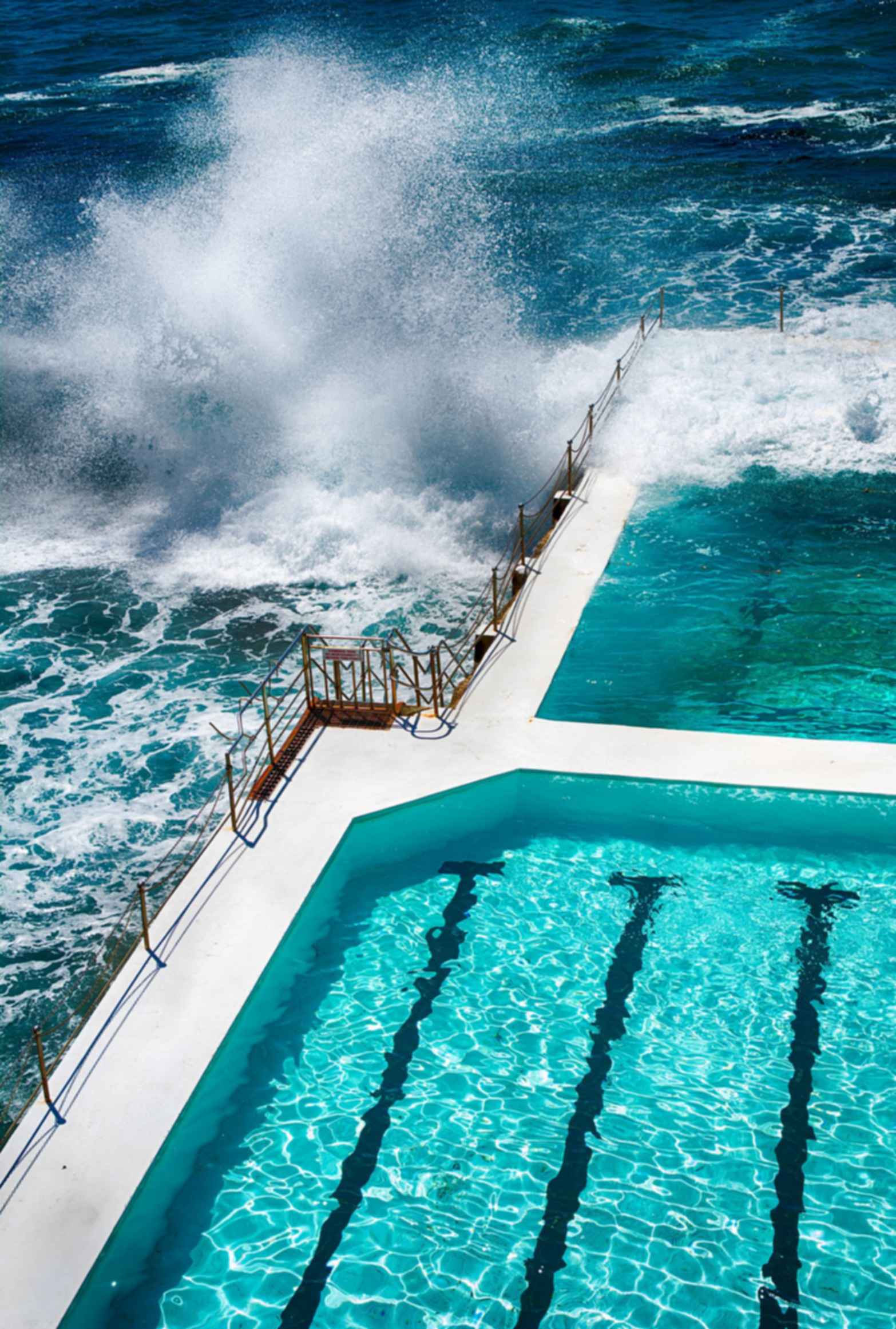Public Swimming Pools
Learn More
Public Swimming Pools
Here are 7 examples of urban public pools, from freshwater to seawater, designed to create a beautiful experience while being an iconic presence in cities.
Learn More About the Photo >
Photos in this Collection




















































LOAD 44 MORE
Collection Type
MiscellaneousArchitectural Style
ModernLeca Swimming Pool
Year of Construction: 1966
Nested in the ground by the ocean in the Portuguese town of Porto, this public pool was one Siza's first projects. His approach was to use the natural rock formation as the basis of the two pools, adding concrete walls within the natural elements to achieve his desired results, rather than simply plopping artificial tubs onto the shoreline. The result is a long-lasting fusion of man-made and natural elements.
Colectivo Urbano
Year of Construction: 2015
Inspired by the sea pools in Lisbon, Colectivo Urban sits on a historical landmark. It was originally built in 1915 and was a social gathering hub for many famous people and thus a big touristic attraction. After it got hit by a hurricane in 1954, the site was abandoned and the pool was only used after a long period of time by locals and the passerby.
As part of a revitalizing project, Colectivo Urbano composed of five architecture, landscape, and urbanism firms proposed to recycle, clean and return the site to its historical splendor by adding a playful spiral slide that becomes an interaction with tidal water.
Copenhagen Harbor Bath
Year of Construction: 2003
The Harbor Bath has been an instrumental part of the transformation of Copenhagen's harbor from an industrial port to a cultural and social center of the city. It is an extension of the park over to the water with an extensive landscaping design that incorporates dry-rocks, piers, boat ramps, cliffs, playgrounds and pontoons, all the while responding to the practical needs of accessibility, safety, and programmatic flexibility. As a terraced landscape, the Harbor Bath completes the transition from land to water, making it possible for the citizens of Copenhagen to go for a swim in the middle of the city.
Theatre D'eau Public Swimming Pool
Year of Construction: 2014
The Fumel public swimming pool is a reorganization of the site with the intention to give back its integrity and return it to its optimal use. To do that, the design is integrated and is a component of the natural landscape. With a playful geometry, a wood fence limits the site and reveals its shape both integrating the landscape around it and fusing with the existing design. The fence houses vital functions of the project. The mineral beaches are punctuated by large, colored, anamorphic shapes inviting the users to playfully find the correct viewpoint. This mineral space is separated from the landscape by greenery. The design elements of the site allow us to create a place rather than just a pool: a water park that anyone can use in his own way.
The Kastrup Sea Bath
Year of Construction: 2004
Part of the revitalization of the new sea front of Kastrup Strandpark sits the integral Kastrup Sea Bath. A sculptural element which can be experienced and seen from the beach that gradually changes silhouettes as the viewer moves around it. Built with Azobe wood, because of its durability with sea water, the pier leads visitors to a circular construction that gradually elevates above sea water and ends with a 5m diving platform.
Bondi Icebergs
Year of Construction: 1929
This licensed winter swimming club would be ideal since it is open winter and summer. However, swimmers who join Bondi Icebergs are required to follow a few house rules, including swimming three Sundays every winter month in water temperature as low as 16C. For the daily swimmer, the club keeps a daily update of water and weather temperatures. But of course, the majority go for that extra splash from the ocean.
Of Soil and Water
Year of Construction: 2015
This is UK's first public freshwater bathing pond, where swimmers now have the opportunity to swim in nature in an urban setting. Opened to visitors from May 22, as part of an innovative experiential art installation and public facility. It is a natural, chemical-free bathing pond open to swimmers and visitors at the King's Cross site.
"The project is an attempt to capture the dynamicity conveyed by the changes within the area, a moment in time where new possibilities and possible futures arise," said architect Eva Pfannes, who co-founded Ooze with Sylvain Hartenberg.



















































